Wintertime is hard for everyone including birds we can help them survive these hard times by,
- Providing high calorie food to survive long nights
- Providing heated water source
- providing warm place to stay
Here we discuss in detail how to provide them to help birds survive the winter.
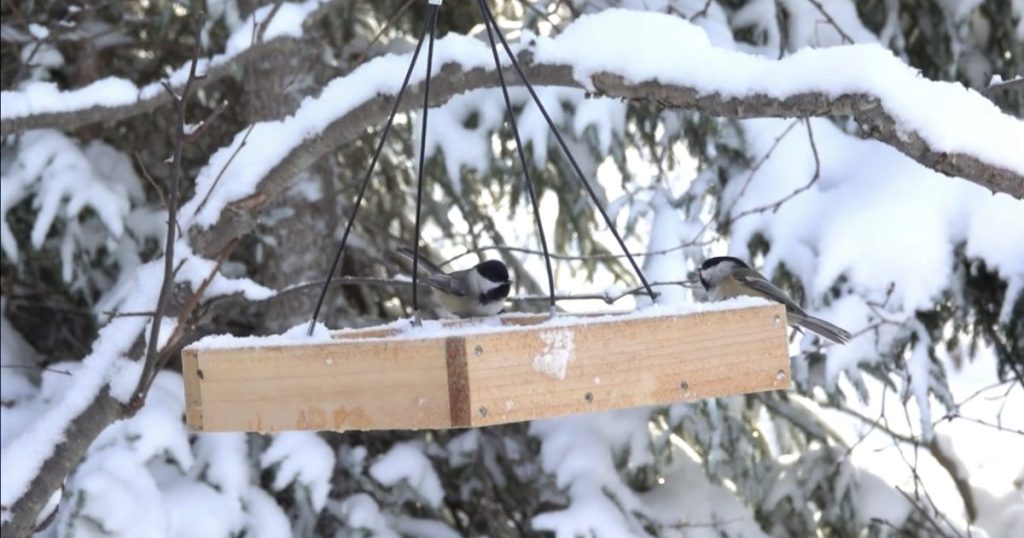
Do birds really need our help during winter?
What can we do to help birds in winter?
What kind of birds you may expect to see?
How to make food for birds in winter?
An easy way to provide shelter
Best way to provide water for birds in winter
Can heated Birdbaths kill birds in winter?
Do birds need our help during winter?
Studies done on the survival of birds over winter have shown that birds do better with access to feeders than ones without, similar to the difference between life and death for the birds. However, especially in extremely cold weather, insects and plant sources are in short supply, posing a challenge for resident birds and even those who have traveled far from the arctic.
What can we do to help them?
One helpful thing you can do for birds over the frosty season is to provide them with high energy and good quality food, ensuring that our winged buddies get plenty of energy.
A great choice of food would be suet.
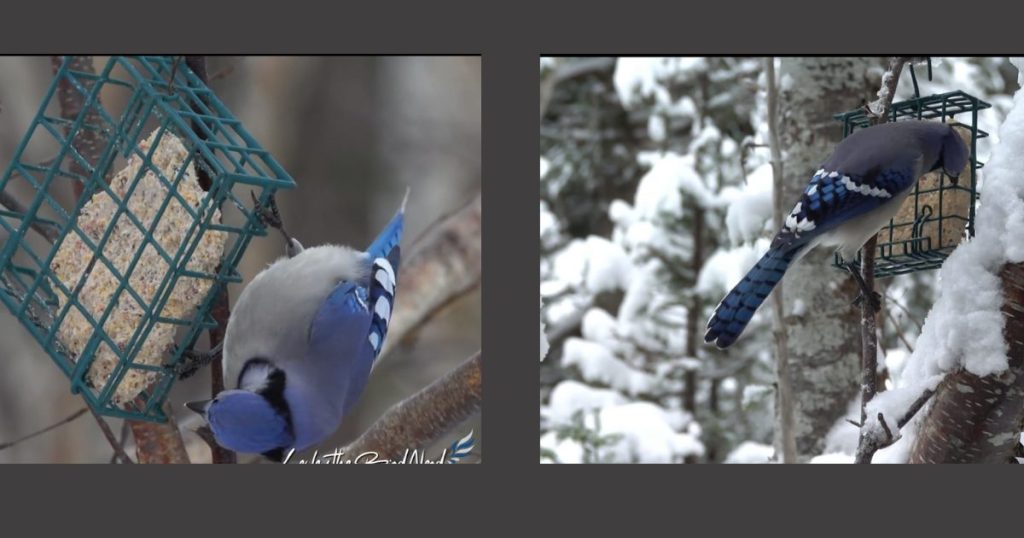
It provides birds with fat, seeds are really drying, and they don’t have a lot of fat. Suets come as the mix of these different seeds and nuts, really helping them to stay warm throughout the day and also aiding in their survival over those long cold nights,
Insect-eating birds are going to need some suet.
Which in the more northern locations can be as long as 16 hours. Many birds will happily enjoy some suet during freezing temperatures, and woodpeckers are one of them. Using a suet feeder that has a tail prop like this,
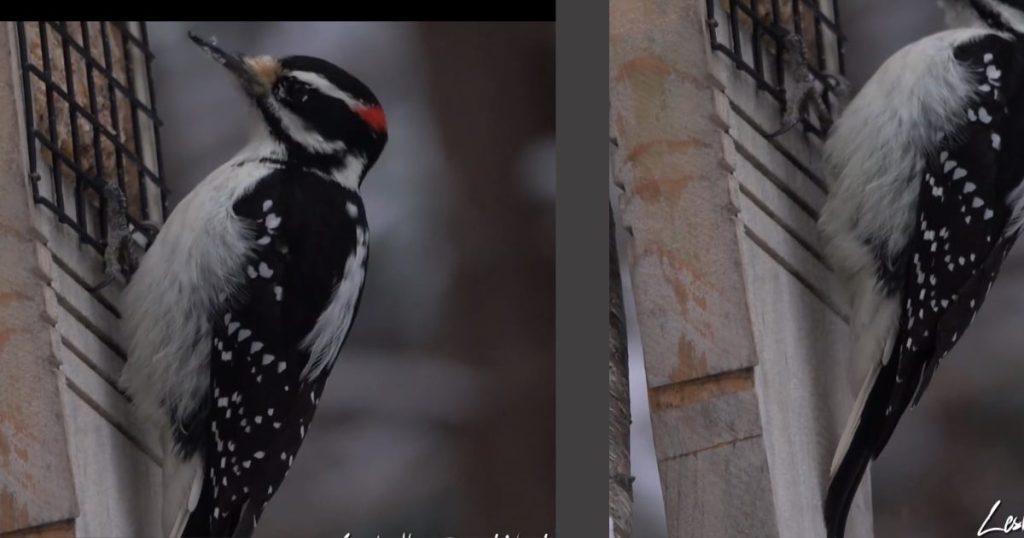
is highly attractive and easy for a bird-like Downy or other woodpeckers to use; chickadees, juncos, jays, and arctic visitors like redpoll, and many other birds love this stuff. Suet can be purchased at stores. It can also be made at home.
Unsalted peanuts, sunflower seeds, and mealworms are other high-energy sources that can be offered. The best thing about all these choices is that they’re quick and easy food for many birds.
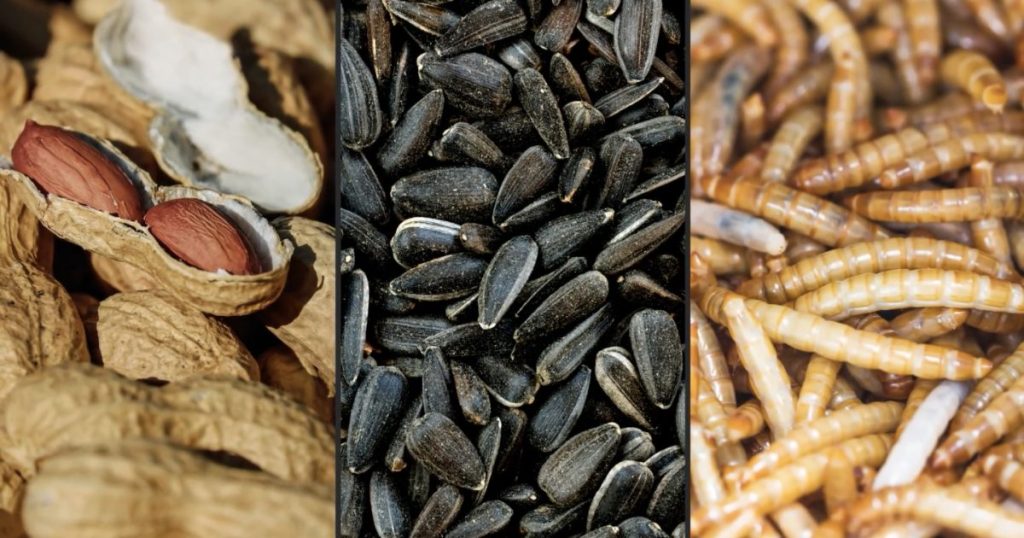
What kind of birds you may expect to see?
Finches, like these darling American goldfinches, pine siskins, and the arctic visitors like redpolls,
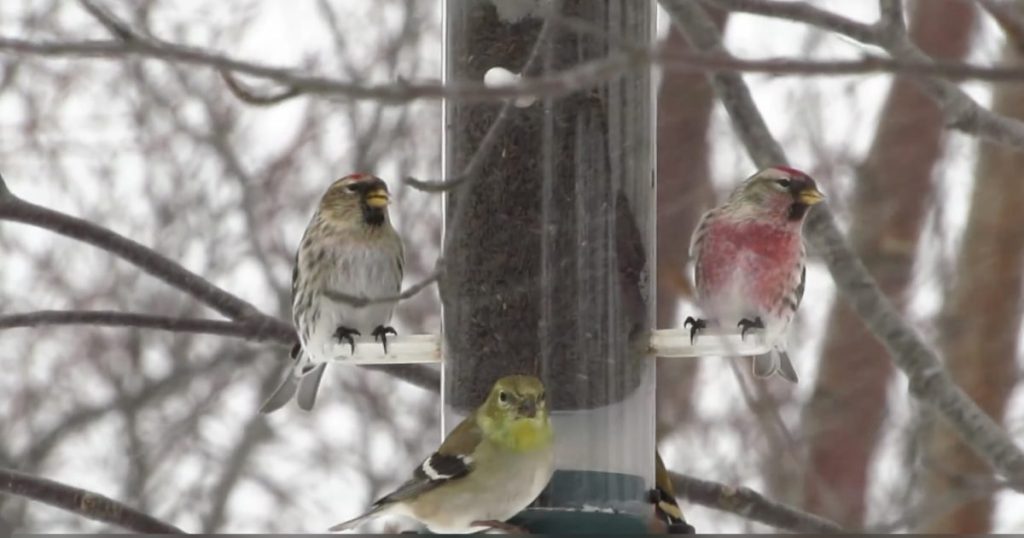
love tube feeders with niger seeds over winter. It can be such a sight to see them all together, the sweet dark-eyed junco. Sometimes, they take advantage. They prefer to feed on the ground like many other sparrows, finches, and doves.
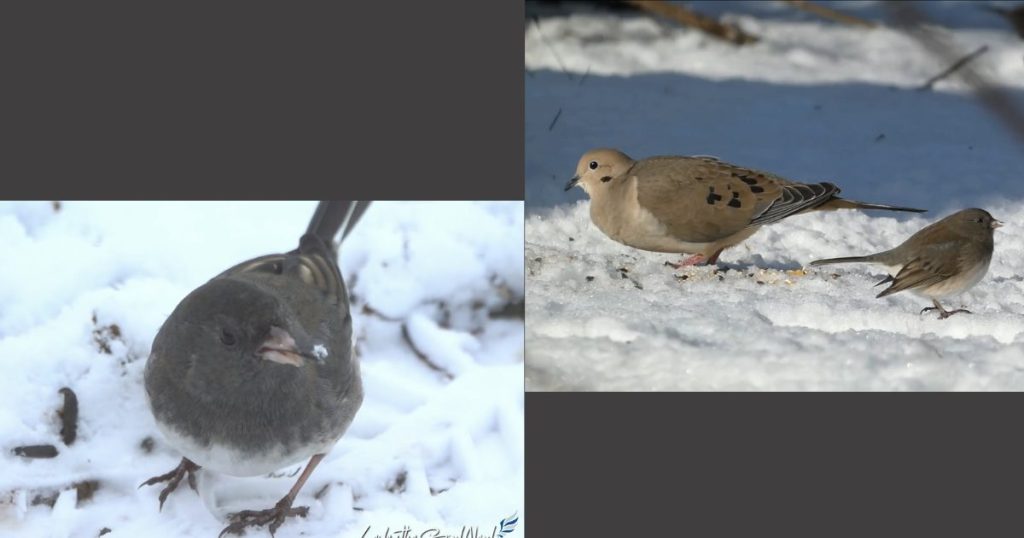
In this case, you can clear a patch of ground to scatter some seeds. For them, if putting seeds on the ground doesn’t work for you, try using tray or platform feeders. Either way, you’ll need to clean up regularly to reduce the chances of attracting other unwanted wildlife.
It’s important in wintertime that once you start feeding the birds, you keep the feeder station up at all times because they’ll become too dependent on you.
As they’ll convert that food into fat, and they’ll store up to ten percent of their body weight in fat. But they’re going to burn off all that fat overnight and then have to start the whole process over again the next day. So you can provide some great food daily.
How to serve food?
When supplying birds with these foods, make sure that they aren’t damp or have any moisture, and keeping them stored in a dry place and using feeders, such as tube feeders or ones with a roof or dome, can prevent moisture, seeds exposed to moisture have the potential to grow mold, and that can make birds sick.
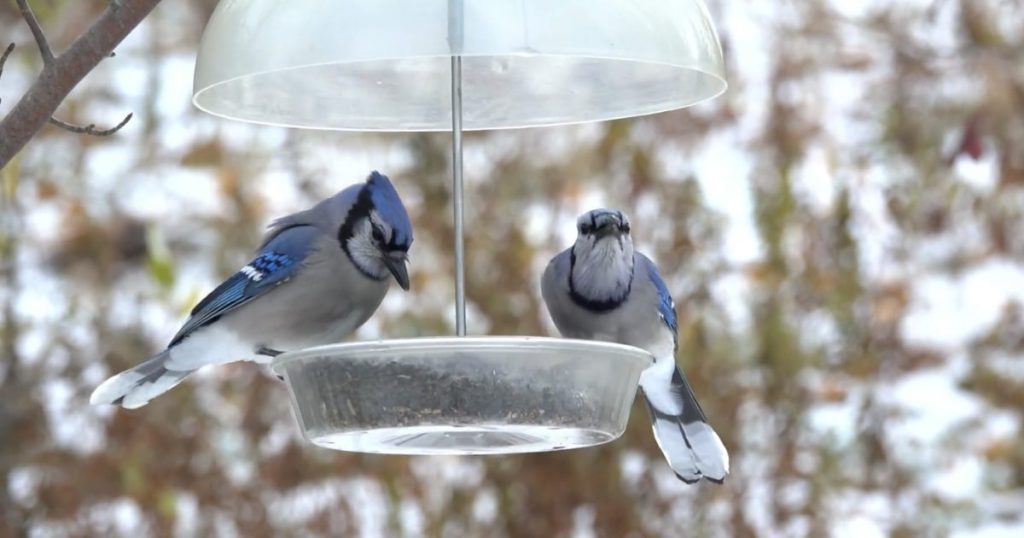
When using platform tray feeders with no protection, try keeping the snow off them. Just try your best it’s important to pay attention to your feeders.
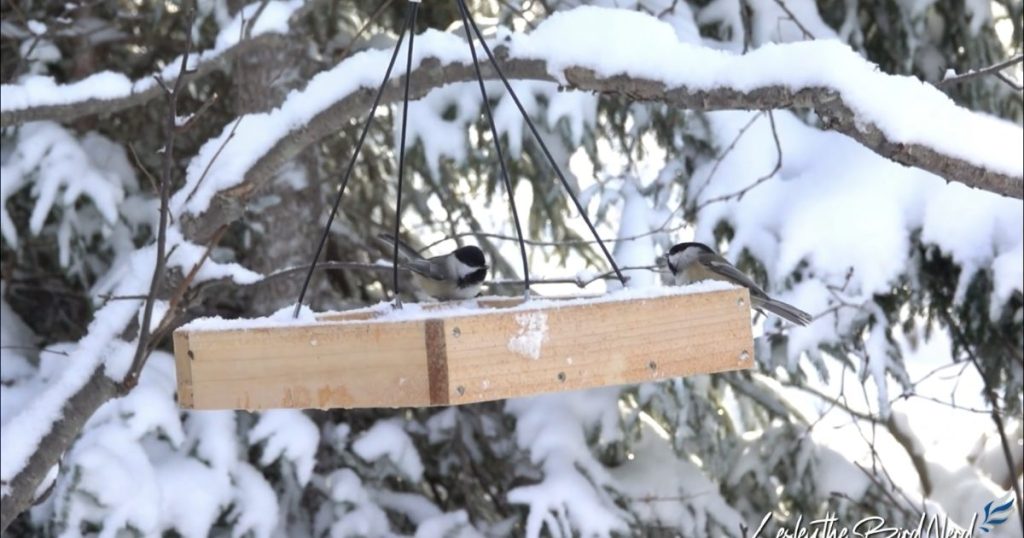
A useful tip during heavy snowfall or even rain is to provide food in smaller amounts.
The right time to serve food:
When feeding birds in winter, knowing what times of the day to have food available helps. On freezing winter nights, birds use a lot of their energy reserves to keep warm, so they waste no time searching for food. Feeders already topped up first thing in the morning offer some help to them. However, giving the feeders a top-up an hour or two before sunset is equally valuable, allowing the birds to get that extra energy boost they’ll need to stay warm through the chilly night.
An easy way to provide shelter:
Feeders aren’t for everyone. Planting natural fruit, seed, or nut-bearing trees can be a fun part of bird watching and helping. Apple, dogwood, holly, oak, and hazel are great sources, which can also be a beautiful addition to your yard.
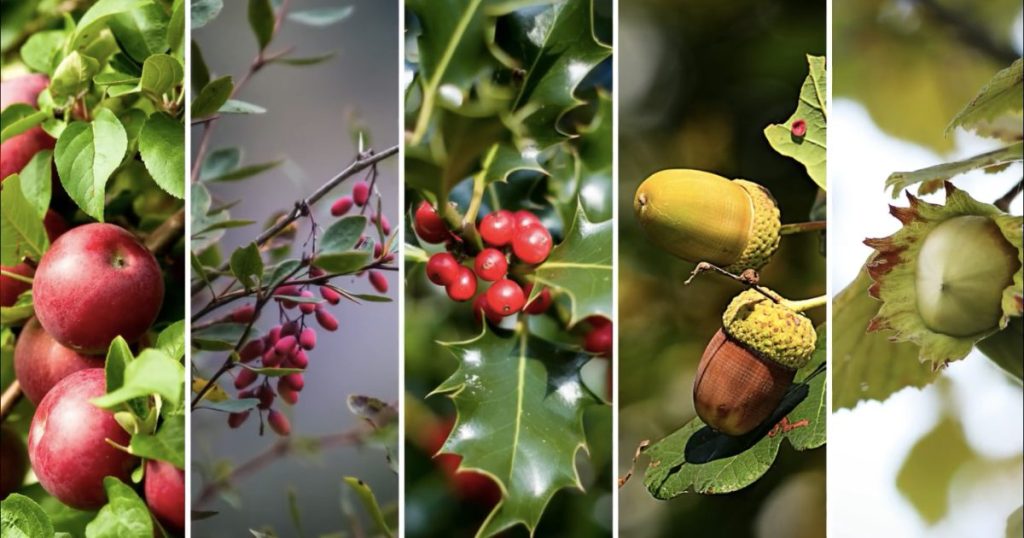
Having the right trees can offer birds protection and shelter too. Evergreens are a good choice since they provide excellent cover from predators, especially in winter.
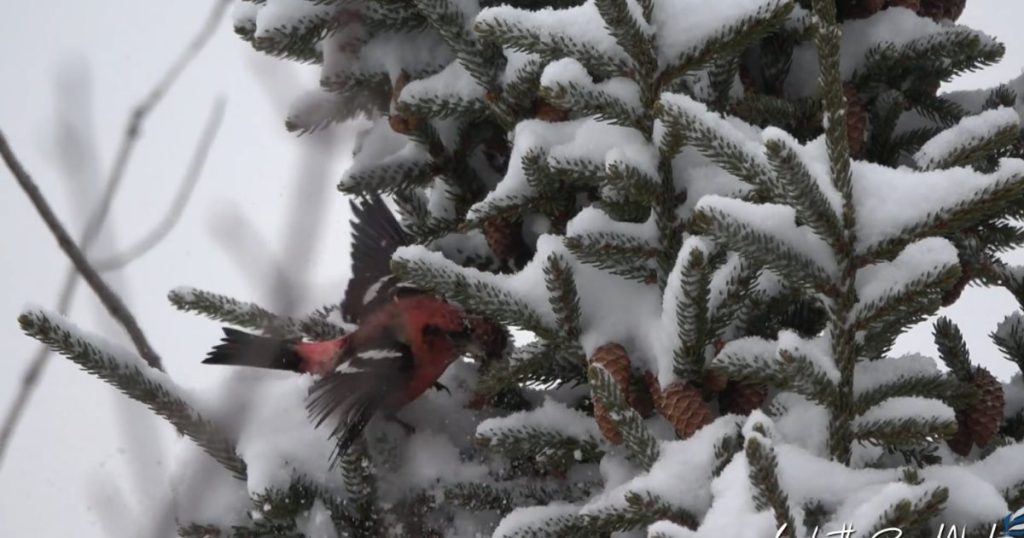
Providing water to birds during winter:
In winter, natural water sources like lakes or brooks are often frozen over or snow-covered, making it very difficult for birds to get a drink.
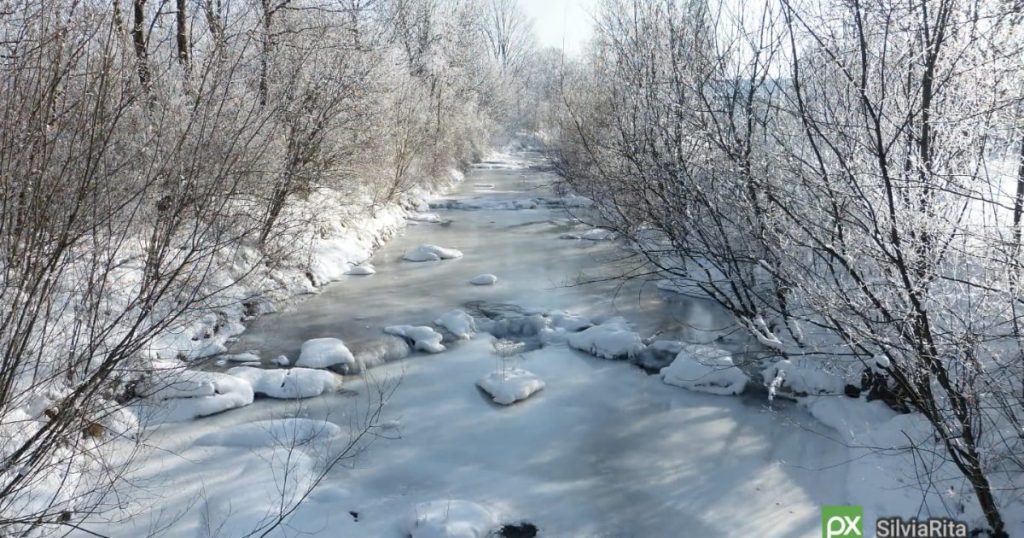
Birds will eat snow if they got no choice,
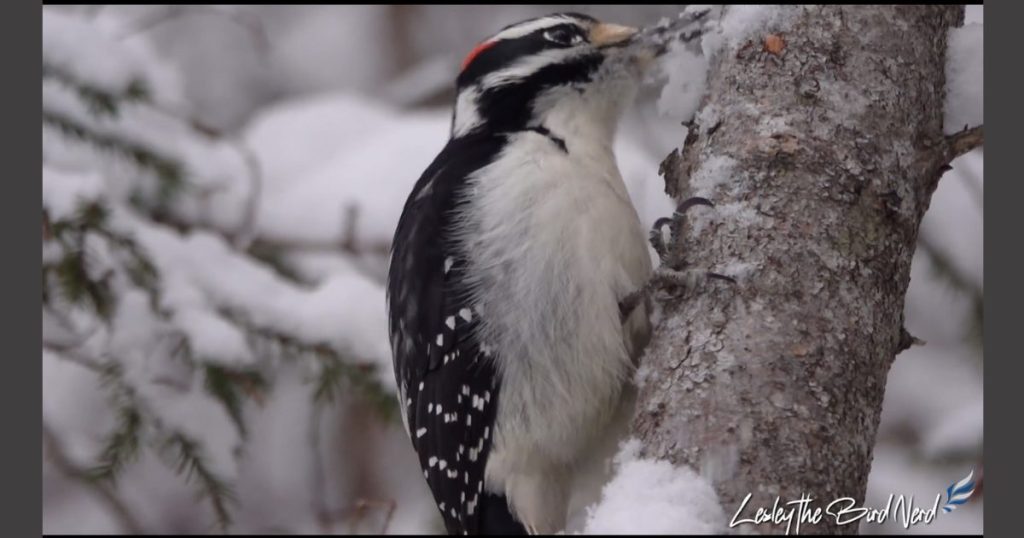
but it requires energy to bring it to body temperature and to melt it into the water. They will try to find a nearby small opening of water in the ice if needed. However, this will take energy to get there.
You can supply birds with hydration by using a bird waterer or a shallow dish like what is shown here,
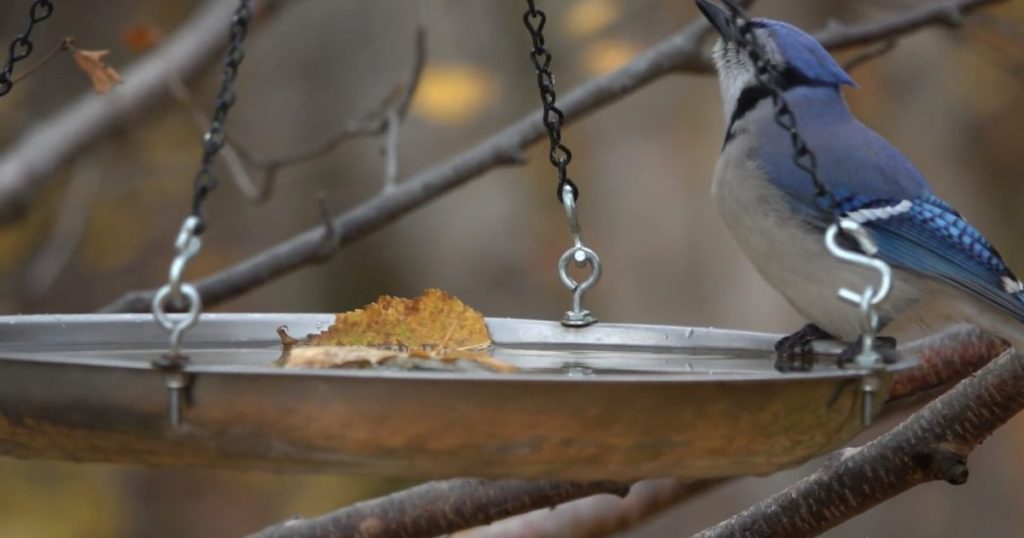
But the problem with this model is keeping the water from freezing. If you bring it inside overnight and refill it each day, that will prevent freezing depending on the outside temperature, or you can use a heated birdbath, which can be very beneficial for our birds. But heated birdbaths could kill birds. Read over to know more,
Heated Birdbaths could kill birds during winter:
If the air outside is very cold, heated birdbaths can pose a huge problem for birds. If they decide to take a bath, the water freezes onto their feathers before they’ve had the chance to shake and preen them off. This can be life-threatening, preventing feathers from keeping them warm and hindering their ability to fly around.
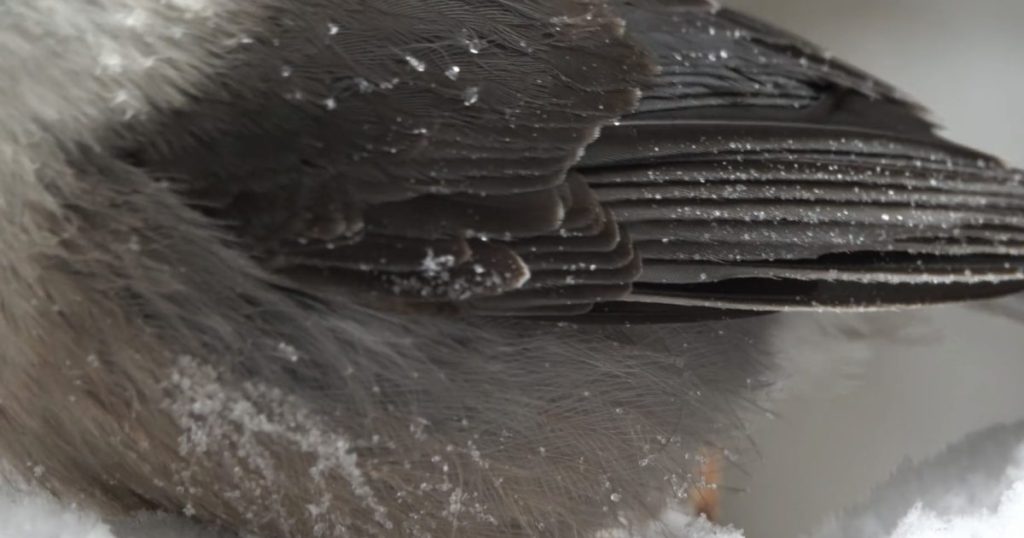
Possible solution:
We can control this by putting a few large rocks in the bath, eliminating space available for bathing but still giving them a chance to get a drink.
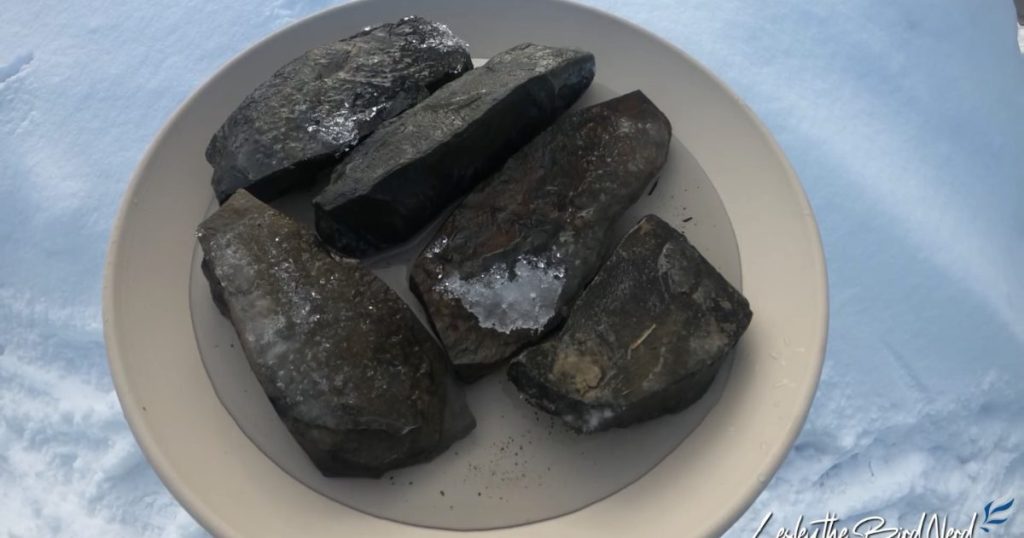
You can get a birdbath like shown here,
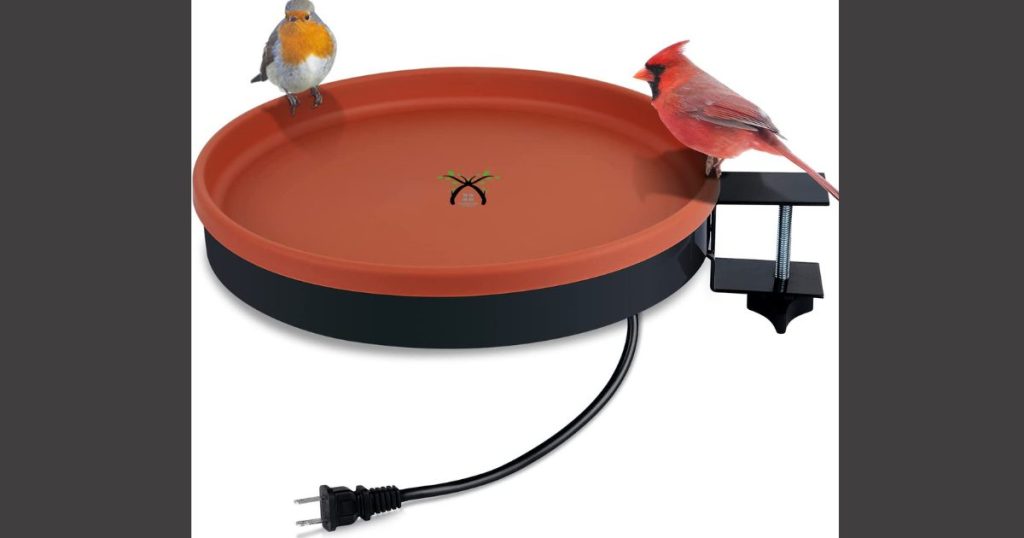
This is just a plastic Basin that has a heater embedded in the base, and you can put this right on the ground or on whatever bird stand you have and then plug it in, and this will keep the water from freezing. It’s really shallow, so the birds can’t get in there and take a bath.
Birds are wise in using water:
Providing water can be fun and helpful but keep in mind that birds are good at figuring this stuff out in a natural setting.
For example, wild birds in very cold temperatures needing feather cleaning will take snow baths rather than bathe in open water, and they can be resourceful, too. I once saw goldfinches on the shingles of my home in winter,
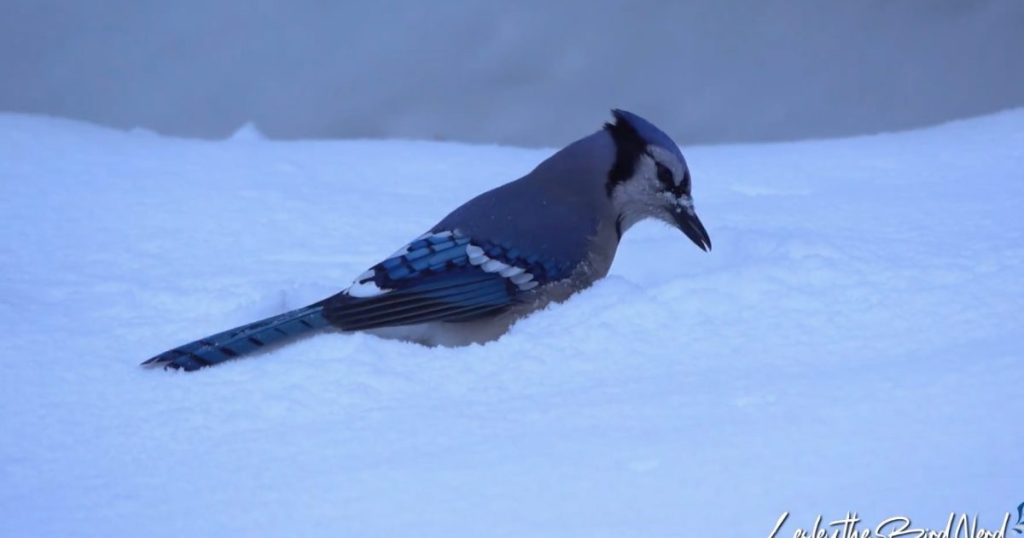
seemingly eating the icicles, it’s incredible what solutions they confine to a problem, but of course, easy access to water is always appreciated.
For people going the heated bird bath route, there are some precautions to take for your safety as well,
Precautions using birdbaths:
- Never add salt or any antifreeze to a bird bath. This could seriously harm birds.
- When using an extension cord, ensure it’s outdoor-rated with polarized plugged prongs that go into a ground fault circuit interrupter or a GFCI outlet.
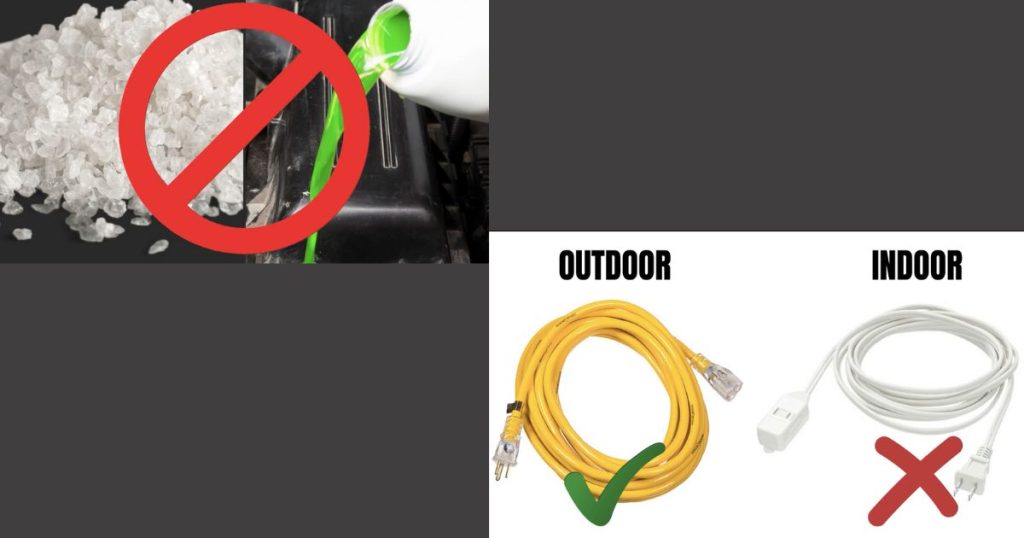
You could not use the proper equipment to electrocute birds, pets, or children.
Nesting box setup:
You can also help birds at night by putting up roosting boxes or even leaving your nesting box up from the previous summer.
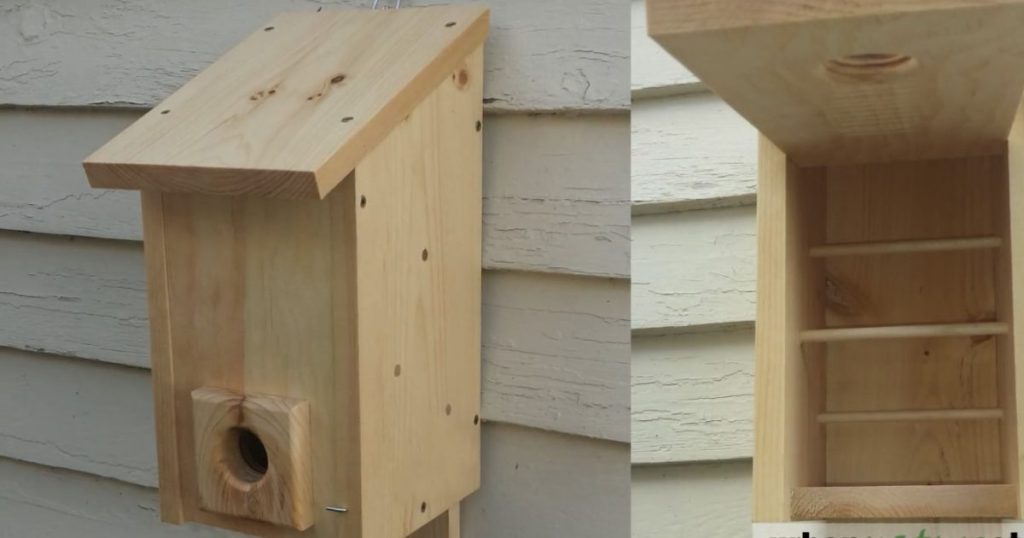
Bluebirds, chickadees, nut thatchers, some woodpeckers, wrens, and other birds will use them over winter. When using nesting boxes, make sure the entrance hole is in the right place. If the front of the box allows you to flip it around, so the hole is closer to the bottom, this is a better setting for a nesting box because it will keep some cold weather out and trap more heat inside. Since heat rises, cover any ventilation holes to keep it warmer.
Preys and Predators:
Aerial ones, like birds of prey, and ground dwellers, such as cats, over winter hawks, will use bird feeders for hunting. But, remember, they are hungry, too, and have just as much at stake over this cold time of year.
Some people don’t like to see one of their beloved backyard birds being hunted by a bird of prey. One thing with backyard feeding is that birds are grouped in one general close-knit area. This creates an unnatural setting that makes it easier for a bird of prey to catch an unsuspecting bird.
Providing birds with a clear view, no fences or walls near feeders, and some dense cover shrubs and trees to retreat ups their chances of evading capture. The denser the cover, the better since hawks can maneuver through tight places.
Ground predators like cats pose a big problem as well. Domestic cats are a major killer of wild birds. This can be dealt with by making sure the feeders are around four feet or more above the snow and making sure there is no cover below that so that cats can hide under and surprise attack our feathered friends.
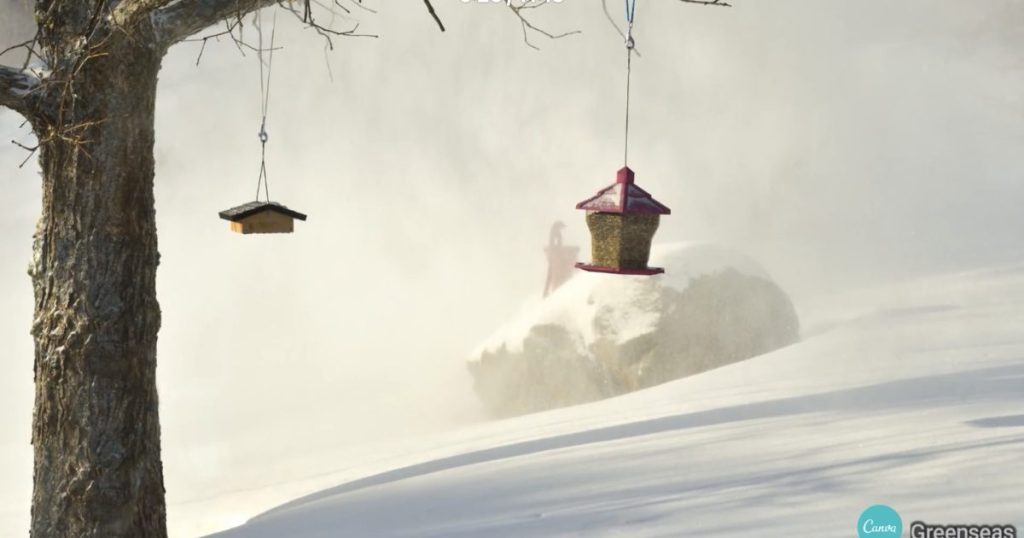
Being hygienic:
Most important of all is keeping the feeding stations and bird baths sanitary, and cleaning on a weekly basis is better depending on the amount of activity. It is equally important to know when to stop feeding birds. This is because the potential for disease to spread is so high at feeding stations.
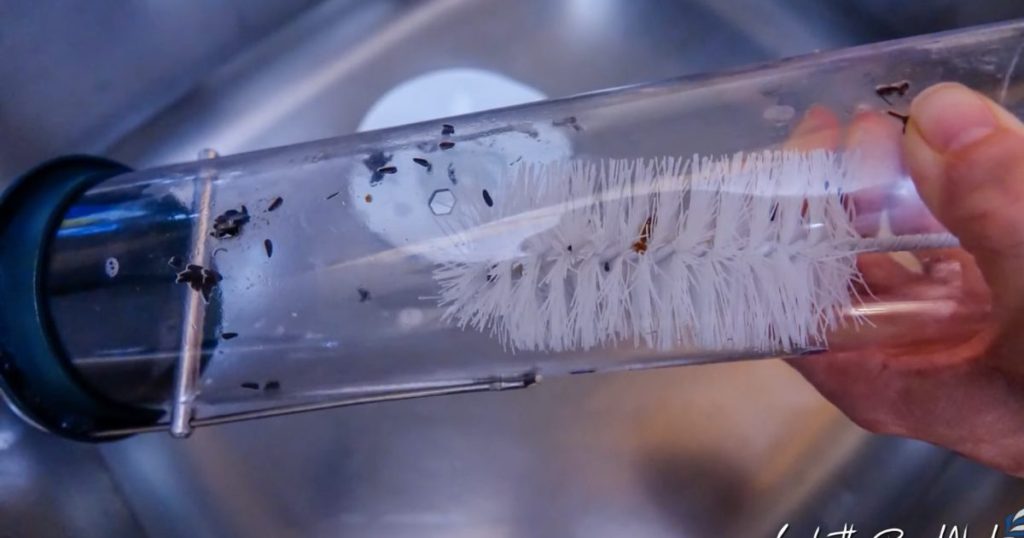
If you see an unusually puffed-up bird that appears lethargic or has visible signs of crusty swollen eyes means that you have a bird that isn’t well and it’s time to take the feeders down;
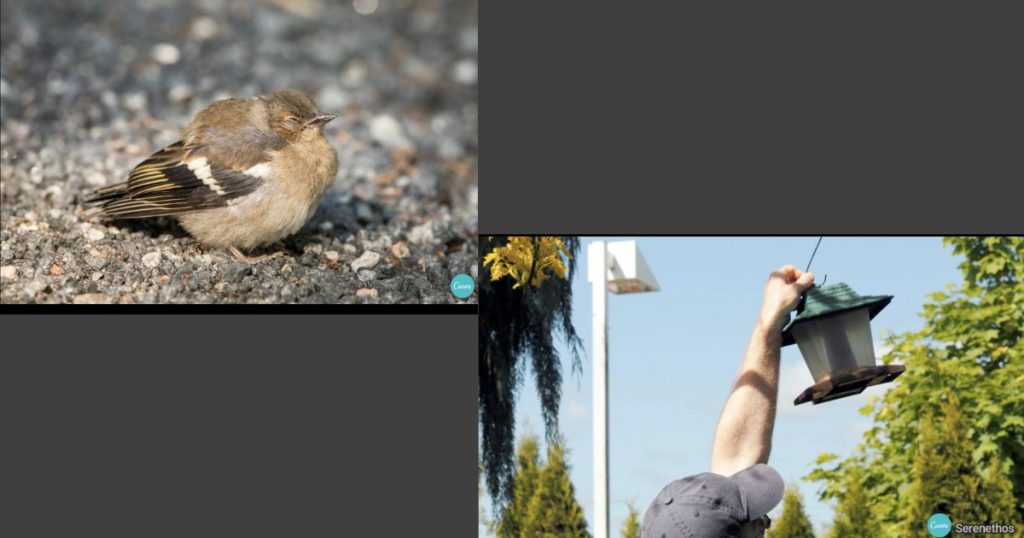
even keeping them clean isn’t enough at this point. With the feeders down, they will all disperse off into other areas in search of wild food sources, therefore preventing a terrible outbreak.
Birds are much better off in this circumstance if presented with a sick bird. If you can consult a wildlife rehabilitator in your location, you could contact them. They will assist you with how to handle a sick bird properly and may be able to help out.
Humans can do plenty of things to help birds over winter, which is great, but I’d like to point out that wild birds do not rely on humans for food. They are hardwired for survival and very good at it, so don’t worry. They will be just fine if you are unable to provide some help. Birds know how to find food and water in a natural setting. They’ve had millions of years of practice.
But as mentioned, you can play a vital role in helping the birds survive these winter weather conditions by providing the right food.